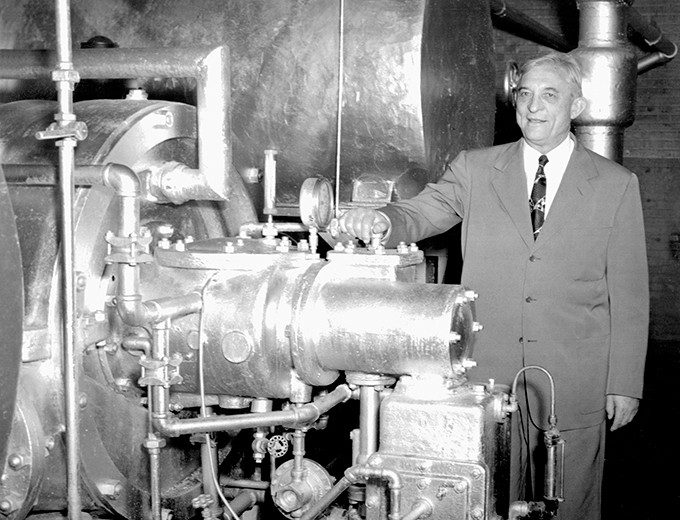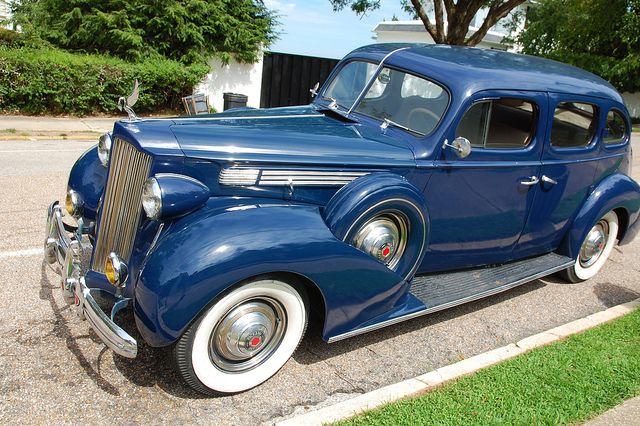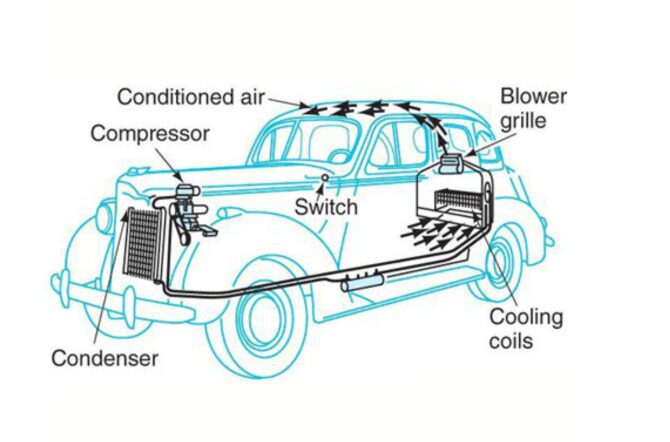Life’s good! God bless Mr. H., and God bless America!
Come to think of it, what would this world be without such a beautiful invention that lets us escape the sequencing heat of the day.
Turn on the Air Conditioner and let’s find out.
Air conditioning (also referred to as AC, A/C, or air con) is a system used to cool down the temperature in an inside space by removing the existing heat and moisture from the room. It is also used to cool and dehumidify rooms that contain heat-producing electronic devices, such as computer servers, power amplifiers.
Today, ACs are everywhere; in our homes, offices, and in malls. Simply put; they are a necessity in today’s world. I hate to imagine a car without one.
But…
Do you know there were actually no cars with AC? Before we look at the first cars without Air Conditioning in them, let’s get to know a bit about this invention.
Who Invented AC?
The world’s first modern electrical air conditioning unit was built in 1901 by an American Inventor named Willis H. Carrier.

In which city was the first-ever air conditioner installed?
On July 17, 1902, Just a year after this technology was born, Carrier went ahead to install the first air-conditioning system in the Sackett-Wilhelms Lithographing & Publishing Company in Brooklyn, New York; where it was used to maintain consistent paper dimensions and ink alignment. At the printing plant, his invention was the Air nomad and Avatar that bends both temperature and humidity.
Carrier together with six other employees formed The Carrier Air Conditioning Company of America, a business that was valued at $18.6 billion in 2020 and employed 53,000 employees that same year.
When did air conditioning become common?
When domestic air conditioning took off, the first was installed in 1914 in the home of Charles Gilbert Gates in Minneapolis. Sources say the huge device (c. 7 x 6 x 20 ft) was however never used as Gates had died in October 1913 and his house remained uninhabited.
H.H. Schultz and J.Q. Sherman are credited for developing the most common type of individual room air conditioner that sits on a window ledge. The units went on sale in 1932 at a price equivalent of $120,000 to $600,000 in today’s money.

It was in the 1950s, after World War II that air conditioning units first became widely affordable. Thanks to increased American prosperity, everyday Americans were able to buy room units and enjoy cool comfort year-round. In 1953 alone, 1 million air conditioners were sold.
History of Automobile Air conditioners
The automobile air conditioners of today are the result of a century’s worth of invention and refinement. To give an idea of where we’ve come from, here’s a look back at the history and science of keeping cool in cars.
When did cars start coming with AC?
Air conditioning comes standard on almost every car sold in the U.S. today for much of the history of the automobile, it was either a cutting-edge luxury or a sci-fi writer’s dream.
Cars in the 1920s did not have air conditioning. It was just a few years after Schultz and Sherman’s design was introduced that car manufacturers decided to make this luxury available in their rides.
Fun fact:
An air conditioning system was more like a feature for luxury and premium cars in Europe, only the rich could afford it.
First Cars with Air Conditioning
While Chrysler Motors holds the record of introducing the first practical semi-portable air conditioning unit in 1935. Packard Motor Car Company of Detroit, Michigan broke through and became the first automobile manufacturer to offer an air conditioning unit in its cars in 1939.

First Car with Air Conditioning
Units of the air-conditioning were manufactured by Bishop and Babcock (B&B), of Cleveland, Ohio. Although they were bulky, an approximate number of 2,000 cars were ordered with the factory-installed air conditioning units.
The setback
Before shipping to a local dealer for delivery to customers. cars ordered with the “Bishop and Babcock Weather Conditioner” were first shipped from Packard’s East Grand Boulevard facility to the B&B factory where the conversion was performed.

This conversion was warranted and supported by Packard but, it was not commercially successful for a couple of reasons:
- The cooling system is located in the trunk, rather than in the dash, and nearly half of the vehicle’s trunk space was taken by the main evaporator and blower system
- It lacked a temperature thermostat or shut-off mechanism. Switching off the blower was the only “control” that drivers had. However, even with the blower off, cold air still somehow finds its way inside the cabin of the car, as the drive belt was always connected to the compressor.
- After the war, it lost its glory to more efficient systems.
- The several feet of plumbing that ran to and from the engine compartment and trunk proved very unreliable in service.
- At a price of $274 (when the average yearly income was $1,368), the unit was too costly and unaffordable to most people in Depression Era / pre-war America.
- The option was short-lived. After 1941, Packard discontinued it.
Eight years after the end of the war, A/C had its come back into the automotive industry. Then many British and American manufacturers like ford, Lincoln, gm, Cadillac, Chevrolet, started offering A/C as an option, all of them were not much different from the rear-mounted systems Packard used in 1939.
Did cars in the 50s have AC?
With the advent of the first SUV, the demand for vehicles with comparatively boundless storage space, and legroom, the idea of having the A/C system in the trunk was given another thought. And in 1954 Pontiac and Nash become the first two companies to fit the A/C system in the front of their cars – the Nash system combines the heater and air conditioner into one in-dash system.
Air-conditioning for automobiles came into wide use from the 1980s to the late twentieth century. and this has become the standard that most car manufacturers have followed since.
It’s totally unimaginable where would we be without air conditioning.
After decades of unsuccessful attempts from companies across the globe, one thing we are certain of is that the first cars with air conditioning is Packard’s idea of making our cars a luxury. This innovation is here to stay, and we can only expect more from the fastest growing automobile segment, SUV.





Too true that iceboxes just wouldn’t make it in cars. AC Cobra didn’t have it. Early, 28, Ford Trucks had a work around with foldable windscreen. Turn indicator on pulleys with reflective surface worked I guess. Good article and writing…Cruise on. (laughing)